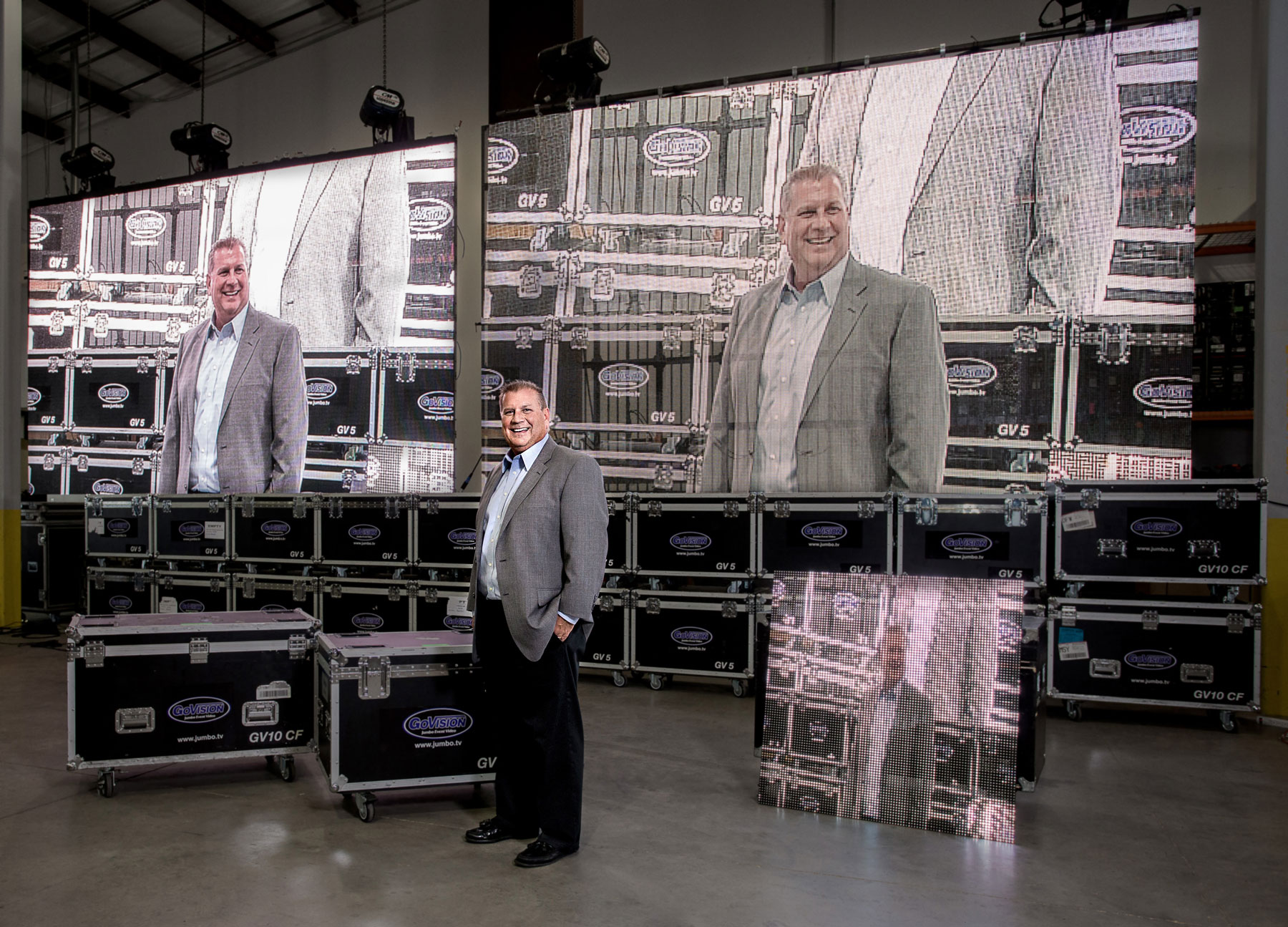Back in the spring of 2006, a nasty storm blew through the Dallas-Fort Worth area. Among the damage it caused was the annihilation of a manual scoreboard at the Las Colinas site of what’s now the AT&T Byron Nelson Championship.
This was the Saturday before the tourney was supposed to tee off.
Help arrived in the form of Chris Curtis, president and founder of GoVision, an Argyle-based company that rents out large digital displays. Curtis put together a video screen and electronic scoreboard system in two days—and the tournament went off without a hitch.
“We’ve been using GoVision ever since,” says Jon Drago, tournament director for the Byron Nelson.
The company provides giant high-definition screens that are used at everything from the last three presidential inaugurations to the NCAA Final Four, the NBA All-Star Game, and the NFL Super Bowl Tailgate. Locally, GoVision customers include the Dallas Cowboys, Texas Christian University, Southern Methodist University, and Texas Motor Speedway.
The company, which employs about 35, will supply screens to roughly 650 events this year across North America, Curtis says. And with nearly 14,000 square feet of screens to rent, GoVision boasts more screen space than one of the giant video displays at Arlington’s AT&T Stadium.
With nearly 14,000 square feet of screens to rent, GoVision boasts more screen space than one of the giant video displays at Arlington’s AT&T Stadium.
And the changes keep coming. New versions of digital displays built on carbon fiber frames weigh only 20 pounds per square meter, compared to the lightest versions before that, which weighed about 50 pounds, Curtis says. That will enable displays to hang from tent gables, or from the entire side of a building without damaging the structures, Curtis says. Displays will also take shapes like cylinders and cubes.
All of which means boom times for GoVision. From first-year revenue of $500,000 back in 2003, the business will do eight figures worth of sales this year, Curtis says. GoVision is cash flow-positive, meaning it generates more cash than it consumes.
To be sure, busy times bring competition—sometimes a little too much. “There are too many vendors or players in the industry,” says Sanju Khatri, director of digital signage and professional video at the Colorado-based market research firm IHS.
The market is being flooded with cheap, Chinese-made displays made with low-cost components, Khatri said. “There’s no brand to stand behind the product” with certain vendors, she says. It’s important for customers to buy brands that have support and service available, she notes. If the screen goes out, “advertisers won’t pay for the content [not] being shown.”
According to Curtis, something similar is happening on the rental side of the business. “Four years ago, we had five to 10 national competitors,” he says. “Now we meet new single-market competitors every month.”
But every problem is a potential business opportunity. Curtis says GoVision potentially could act as a consolidator, giving it the ability to establish operations in strategic locales. He has been having discussions with potential investors to help fund acquisitions or another form of expansion. Curtis has also weighed going into related lines of work, and is actively pursuing becoming an installer of permanent screens at stadiums and similar venues.
A number of potential suitors have been knocking on the door. Although Curtis won’t rule out a sale at some point down the road, “we’re not ready for that” now, he says.
He admits that the business can be nerve-wracking at times. “It is very career threatening if the screen fails,” he says. “You don’t get a second chance on making a screen work.” But, he adds, “This is a fun business. If you’re coming here for a job, you’re coming to the wrong place. It’s a lifestyle.”






